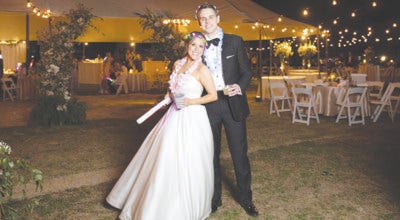SCRATCH KITCHEN: Jason Penley’s hands-on approach at Relish Bistro
Published 11:28 am Monday, March 21, 2022
Jason Penley moves about the kitchen at Relish Bistro with relative ease during the pasta-making process.
The restaurant is closed in the afternoons, but he’s hard at work making fresh pasta for the dinner shift. As someone who’s been in the restaurant industry since age 15, the Vicksburg native and trained chef knows a thing or two about good food.
Since opening at 1104 Washington Street in October 2020 Relish has become known for its fresh ingredients and inventive takes on classic dishes. No meal better encapsulates this philosophy than the pasta dishes on the menu, which begin with just two ingredients.
“We just use water and semolina. I do not use eggs in my pasta, so it’s vegan-friendly,” Penley said. “Semolina is from durum wheat. It’s really fine, similar to cornmeal.”
As Penley measures out 2 pounds, 5 ounces of semolina on a scale, he explains the differences — and advantages — in fresh versus store-bought dried pasta.
Pouring the semolina through a fine-mesh sieve, scooping some out, adding more in until he’s at the perfect ratio, the process begins.
“Fresh pasta will cook faster, it’ll absorb more flavor,” he said. “When you use a bronze die like I have on my machine, the pasta helps open up the pasta and make it more porous.”
As he pours the semolina into the restaurant’s Arcobaleno pasta maker, he measures out the water. Today, he’s beginning with fettuccine pasta, a wide and flat shape that requires between 12 and 13 ounces of water.
While Penley is skilled in making various shapes of pasta, he said most customers at Relish prefer spaghetti and fettuccine.
A graduate of the University of Southern Mississippi’s Hospitality Management program and of the Le Cordon Bleu College of Culinary Arts in Atlanta, Penley pointed out that the way pasta is served in America isn’t exactly the way the Italians would prefer.
“Technically, the way we do (pasta and sauce) in America isn’t right,” he said. “It’s supposed to be like, how a salad and a vinaigrette go together. The sauce is supposed to stick to the pasta, and it’s supposed to be all together. Not like sauce on a bed of pasta.”
No matter the shape or the sauce, Penley said the most important thing in the pasta-making process is the ratio of water to wheat. The pasta dough should feel silky, and then be allowed to rest. There are two types of gluten in pasta, he said, and if there’s too much of one type in the dough, it makes pasta that’s too chewy.
While Relish has a pasta machine now, Penley said he didn’t start out on the easy route making pasta.
“I didn’t have a (pasta machine) until I was in Austin,” he said. “The biggest mistake is not getting the ratio right, or leaving the dough too long, or not mixing it correctly. If you’re hand-cranking it, you have to make sure the machine isn’t too warm. If you’re hand-rolling it, you have to use egg and again make sure the dough isn’t too warm.”
Penley also revealed a little trick of his trade: bronze dies are better than Teflon. As pasta is extruded, he said, bronze dies allow the pasta to become more porous than Teflon dies would.
Once the dough is mixed, the texture should be similar to a strudel.
While the machine gets to work, Penley explains his philosophy and love for the art of cooking.
“I’ve always been in the kitchen, always wanted to work in the kitchen. My mom’s a great cook, and she’s definitely my biggest inspiration,” he said. “I enjoy it. You’ve got to love what you do, to be in the kitchen.”
While he began his career in Vicksburg, Penley has also worked in Atlanta, Austin, New Orleans and Tennessee.
At each of the stops along the road to restaurant ownership with his brother James (who mans the bar at Relish), Penley said he learned lessons that molded him into the chef he is today.
“It doesn’t matter who the chef is, you can learn something from them. That’s what I love about this industry,” he said. “When you first start off as a line cook and move through the ranks, you’re going to do a lot of cooking. But when you get to executive chef, it’s all paperwork. I like to be working in the kitchen.”
He must enjoy working in the kitchen, as everything but the bread at Relish is made from scratch with the help of his staff.
“It’s a scratch kitchen,” he said. “We do all the pasta, all the sauces from scratch, the soups.
“As a chef or anyone, you need to do what you’re good at. Don’t copy anyone, just be unique and the people will come,” he added, while sprinkling semolina on the pasta as it’s extruded to keep it from sticking, using a bench scraper every few seconds to cut the pasta to the correct size.
One batch can create 13 pounds of pasta and, once it’s cooked, it’s time to add the sauce.
Relish serves its pasta with Pomodoro, Bolognese, Alfredo and Scampi sauces, all hand-crafted on site.
It’s something to consider the next time you have a fork in hand at the bistro.








